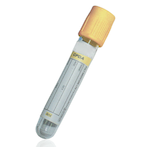
- Home
- Clinical Chemistry Tests
- Creatine Kinase (CK)
Creatine Kinase (CK)
Specimen Volume
5 mL blood.Sample Preparation
Centrifuge
Turnaround Time
1 daySample Processing In Laboratory
Usual
Sample Stability
Activity is stable in samples storeed at 4 ºC for up to seven days or four weeks when stored at -20 ºC.
General Information
Creatine kinase (CK) is an enzyme that catalyzes the reversible phosphorylation of creatine by adenosine triphosphate (ATP). The CK enzyme is a dimer composed of subunits derived from either muscle (M) or brain (B). Three isoenzymes have been identified: striated muscle (MM), heart tissue (MB), and brain (BB). Normal serum CK is predominantly the CK-MM isoenzyme. Serum CK concentrations are reflective of muscle mass causing males to have higher concentrations than females. CK may be measured to evaluate myopathy and to monitor patients with rhabdomyolysis for acute kidney injury.
Patient Preparation
None
Notes
Creatine Kinase (CK, CPK) is an enzyme found primarily in the heart and skeletal muscles, and to a lesser extent in the brain. Significant injury to any of these structures will lead to a measurable increase in CK levels. Elevations in CK are found in:
-
Myocardial infarction
-
Crushing muscular trauma
-
Any cardiac or muscle disease
-
Brain injury
-
Hypothyroidism
-
Hypokalemia
-
Malignant hyperthermia
-
Drugs (statins, fibrates, antiretrovirals etc)
-
Macro CK
CK can be raised following injury to the myocardium and can be detected 4h after an infarction. Hs troponin I and ECGs are now used routinely to diagnose MI or acute coronary syndrome. Muscle trauma causes CK elevations within 12 hours of onset, peaking within 1 to 3 days, and declining 3 to 5 days after cessation of muscle injury. If there is on-going injury, the CK will remain elevated indefinitely. Serum CK activities exceeding 200 times the upper reference limit may be found in acute rhabdomyolysis, putting the patient at great risk for developing acute renal failure.
Reference Range
Females 29 - 168 U/L
Males 30 - 200 U/L
CK levels are higher in males than in females, and in black race populations. Exercise, muscle trauma (contact sports, traffic accidents, intramuscular injections, surgery, convulsions, wasp or bee stings, and burns), and drugs such as cholesterol-lowering statins can damage muscle and increase serum CK concentrations.
Source of Reference Range
Abbott DiagnosticsSpecifications
-
EQA Status:
NEQAS
- EQAS Scheme: Yes
Link to Further Information
https://pinboard.in/u:duty_biochemist/t:CK/Related Tests
Phosphate (serum) Potassium (serum) SodiumCreation Date
Monday, 08 August 2011Modification Date
Monday, 10 February 2020General Information
Location of Laboratories
Copyright UHB Pathology 2018
Protection of Personal Information – Clinical Laboratory Services comply with the Trust Data Protection Policy and have procedures in place to allow the Directorate and it’s employees to comply with the Data Protection Act 1998 and associated best practice and guidance.
University Hospitals Birmingham medical laboratories at Queen Elizabeth Hospital, Heartlands Hospital, Good Hope Hospital and Solihull Hospital are UKAS (United Kingdom Accreditation Service) accredited to the ISO 15189:2012 standard. For a list of accredited tests and other information please visit the UKAS website using the following link: https://www.ukas.com/find-an-organisation/
- Molecular Pathology is a UKAS accredited medical laboratory No. 8759
- Biochemistry is a UKAS accredited medical laboratory No. 8910
- Haematology and Transfusion is a UKAS accredited medical laboratory No. 8784
- Clinical Microbiology is a UKAS accredited medical laboratory No. 8760
- Cellular Pathology is a UKAS accredited medical laboratory No. 10141
- Musculoskeletal laboratory is a UKAS accredited medical laboratory No. 9897
- Heartlands, Good Hope and Solihull Hospital pathology laboratories are a UKAS accredited medical laboratory No.8217.
Tests not appearing on the UKAS Schedule of Accreditation currently remain outside of our scope of accreditation. However, these tests have been validated to the same high standard as accredited tests and are performed by the same trained and competent staff.
For further test information, please visit the test database: http://qehbpathology.uk/test-database
For further information contact Louise Fallon, Quality Manager, 0121 371 5962
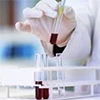 Biochemistry
Biochemistry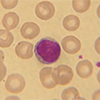 Haematology and Transfusion
Haematology and Transfusion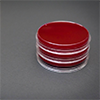 Clinical Microbiology (Including Virology)
Clinical Microbiology (Including Virology)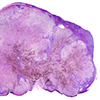 Cellular Pathology
Cellular Pathology General Information
General Information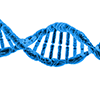 Molecular Pathology
Molecular Pathology